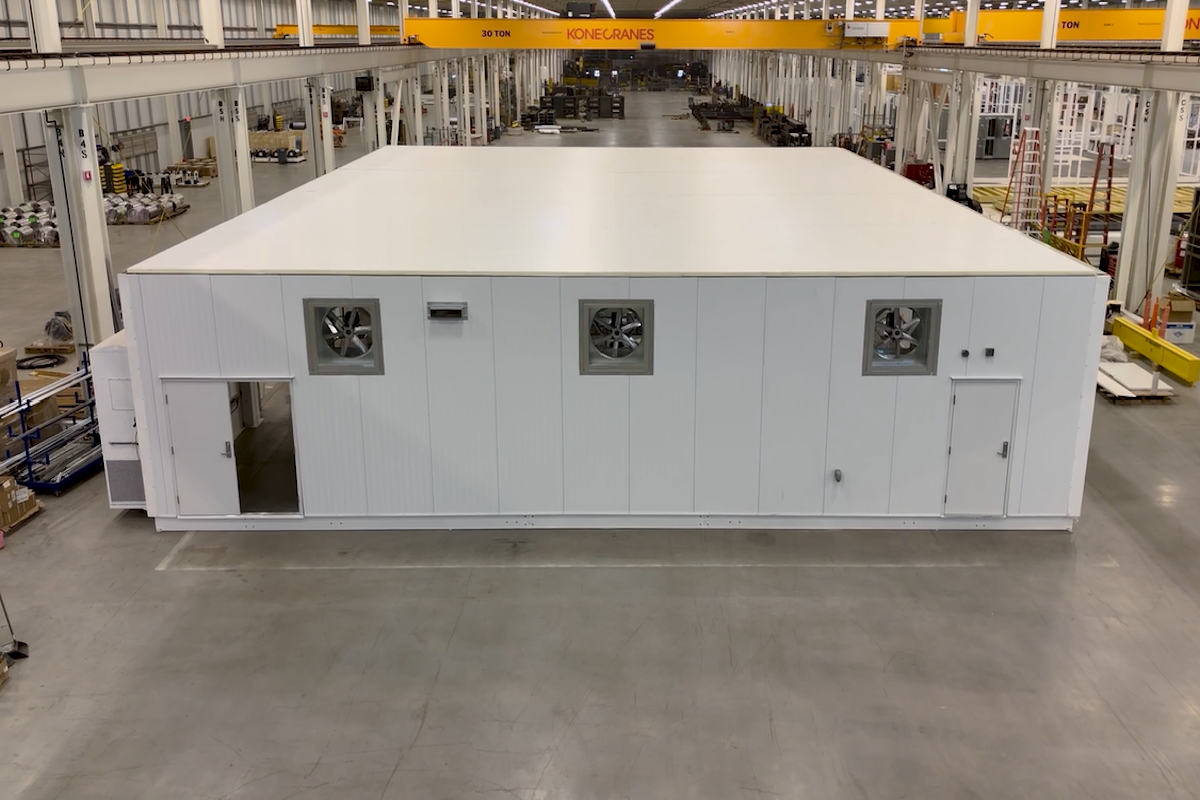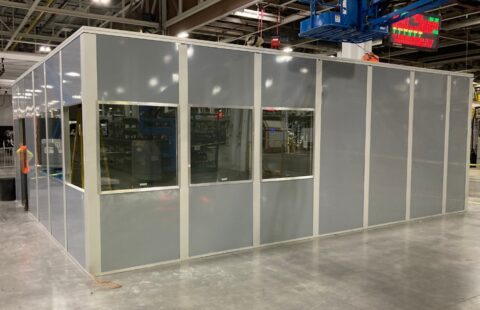
The Role of Modular Electrical Rooms in Industrial Automation
As industries embrace automation, the demand for efficient, scalable, and cost-effective electrical infrastructure is rising. Modular electrical rooms have emerged as a transformative solution, offering pre-engineered, factory-built systems that enhance power distribution and automation control.
Unlike traditional electrical rooms that require extensive on-site construction and installation, modular electrical rooms are designed and built off-site in controlled environments and then delivered pre-assembled and pre-tested. This approach significantly reduces project timelines, lowers costs, and enhances system reliability—key factors in optimizing industrial automation processes.
In this guide, we will explore the benefits of modular electrical rooms, their role in streamlining automation, and how they contribute to the efficiency and sustainability of industrial operations.
What Are Modular Electrical Rooms?
A modular electrical room is a prefabricated, enclosed structure that houses electrical distribution equipment, control panels, and automation components. These rooms serve as centralized hubs that manage power supply, process control, and communication between automated systems.
Key Components of Modular Electrical Rooms
- Switchgear & Circuit Breakers – Distribute power safely and protect automation equipment from electrical faults.
- Programmable Logic Controllers (PLCs) & Control Panels – Enable automation, real-time monitoring, and system control.
- Transformers & Uninterruptible Power Supply (UPS) Systems – Maintain stable voltage and provide backup power to prevent disruptions.
- Cooling & Ventilation Systems – Ensure electrical components operate within safe temperature ranges to prevent overheating and failures.
- Fire Suppression Systems – Protect sensitive electrical equipment from potential fire hazards.
Industries That Benefit from Modular Electrical Rooms
- Manufacturing & Automotive – Supports automated production lines, robotic systems, and machine control.
- Data Centers – Ensures stable and uninterrupted power for critical digital infrastructure.
- Pharmaceutical & Food Processing – Maintains precise control over temperature-sensitive automation processes.
- Oil & Gas – Provides a reliable power source in remote and hazardous environments.
How Modular Electrical Rooms Streamline Industrial Automation
1. Faster Deployment and Scalability
Traditional electrical rooms require months of on-site construction, delaying automation projects. Modular solutions are built off-site and delivered ready to install, reducing deployment time by up to 50 percent. This rapid installation allows businesses to scale their operations efficiently, ensuring they can keep up with market demands without unnecessary delays.
2. Cost-Effective and Lower Maintenance Requirements
Constructing an electrical room from scratch involves high labor costs, material expenses, and project delays. In contrast, modular electrical rooms offer cost savings through:
- Prefabrication efficiencies, which reduce material waste and streamline production.
- Lower on-site labor costs, as most work is completed in a controlled factory setting.
By reducing both upfront investment and long-term maintenance costs, modular electrical rooms help businesses achieve a faster return on investment.
3. Enhanced Safety and Compliance
Industrial automation relies on high-voltage electrical systems, making safety a top priority. Modular electrical rooms are designed with built-in safety features, including:
- Fire-resistant materials and advanced fire suppression systems.
- Compliance with industry standards such as UL regulations.
- Reduced on-site electrical work, lowering the risk of installation errors and accidents.
These features ensure a safer work environment while maintaining compliance with regulatory requirements.
4. Improved Energy Efficiency and Sustainability
Modular electrical rooms are designed with energy efficiency in mind, incorporating features such as:
- Optimized power distribution, which minimizes energy losses.
- Smart metering and real-time monitoring, allowing for better control of energy consumption.
- Enhanced insulation and cooling systems, reducing energy waste and lowering operational costs.
With industries focusing on sustainability, modular electrical rooms play a crucial role in reducing carbon footprints by improving energy management and reducing overall power consumption.
5. Space-Saving and Flexible Design
Unlike traditional electrical rooms, which require large dedicated spaces, modular electrical rooms are designed to be compact and adaptable. Businesses can:
- Optimize facility layouts by placing electrical rooms closer to automation equipment.
- Reduce the need for extensive construction modifications.
- Easily relocate modular rooms if facility expansion or reconfiguration is required.
This flexibility makes modular electrical rooms an ideal solution for industries with evolving automation needs.
Seamless Integration with Industrial Automation
Pre-Wired and Pre-Tested for Reliability
Modular electrical rooms undergo thorough Factory Acceptance Testing (FAT) before being shipped. This process includes verifying wiring connections, voltage levels, and control system functionality, eliminating potential errors and ensuring a smooth integration with existing automation infrastructure.
Challenges and Considerations
While modular electrical rooms offer numerous advantages, industries should consider:
- Initial Investment – Prefabrication costs can be higher than traditional solutions, but the long-term benefits outweigh the upfront expense.
- Customization Needs – Certain industries may require modifications to meet specific operational requirements.
- Logistics & Transportation – Delivery and installation must be carefully planned to avoid disruptions.
Future Trends in Modular Electrical Rooms
1. AI and Predictive Maintenance
Advancements in artificial intelligence are enabling predictive maintenance, allowing industries to detect potential failures before they occur. This minimizes downtime and extends the lifespan of electrical components.
2. Renewable Energy Integration
As industries move toward sustainability, modular electrical rooms are being designed to incorporate renewable energy sources, such as solar panels and battery storage systems.
3. Wireless Power Distribution
Innovations in wireless power transmission may eliminate the need for traditional wiring, further simplifying modular electrical room installations and improving system efficiency.
Conclusion: Why Choose Modular Electrical Rooms for Industrial Automation?
At Miller Industries, we recognize the importance of efficient, scalable, and cost-effective solutions for industrial automation. Our expertise in modular electrical room fabrication ensures that businesses benefit from:
- Accelerated deployment, reducing project timelines and minimizing downtime.
- Reliable performance, with pre-tested systems that integrate seamlessly with automation infrastructure.
- Cost savings, achieved through reduced labor, minimal maintenance, and optimized energy management.
For industries seeking high-quality modular electrical rooms that enhance automation efficiency, Miller Industries delivers solutions designed to meet the evolving needs of modern manufacturing and industrial operations. Visit Miller Industries to learn more about our capabilities.
Frequently Asked Questions (FAQs)
1. What is the primary function of a modular electrical room in industrial automation?
A modular electrical room centralizes power distribution and automation control, ensuring seamless integration with industrial processes.
2. How does a modular electrical room improve efficiency?
It reduces installation time, minimizes errors, and enhances power management, enabling faster and more reliable automation.
3. Can modular electrical rooms be customized?
Yes, they can be tailored to meet specific voltage, space, and regulatory requirements.
4. Are modular electrical rooms cost-effective?
Yes, they lower construction and labor costs by up to 25% while offering long-term savings through improved reliability and reduced maintenance.


